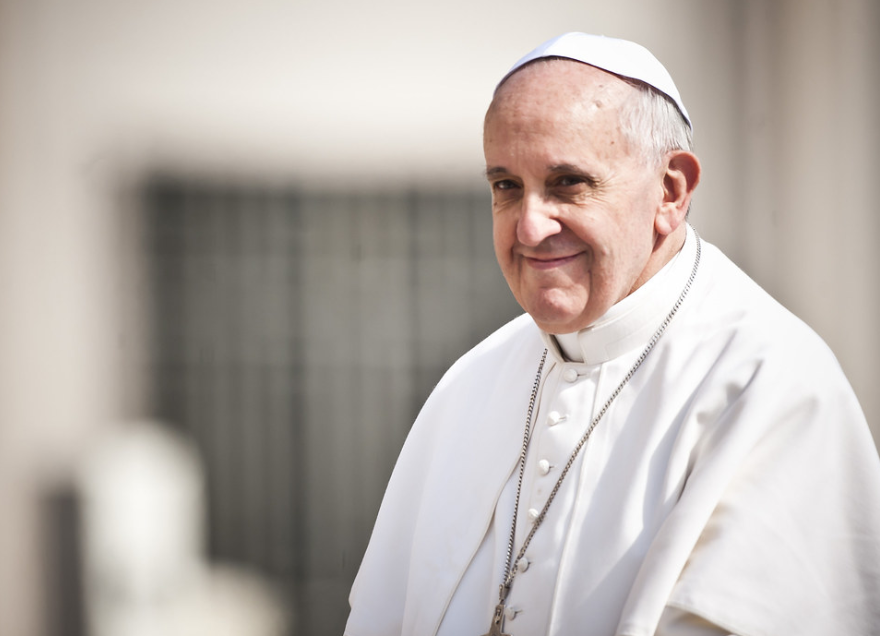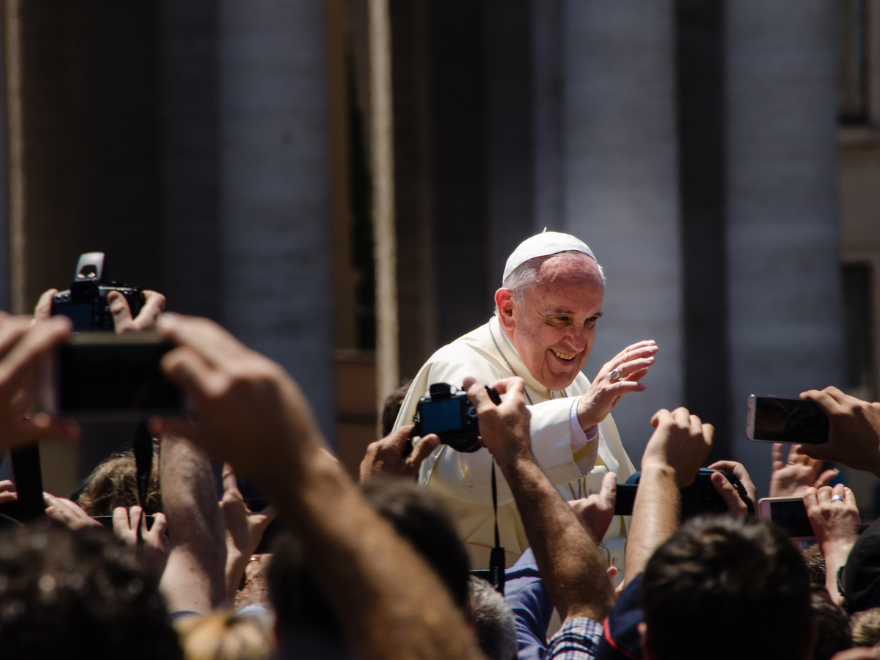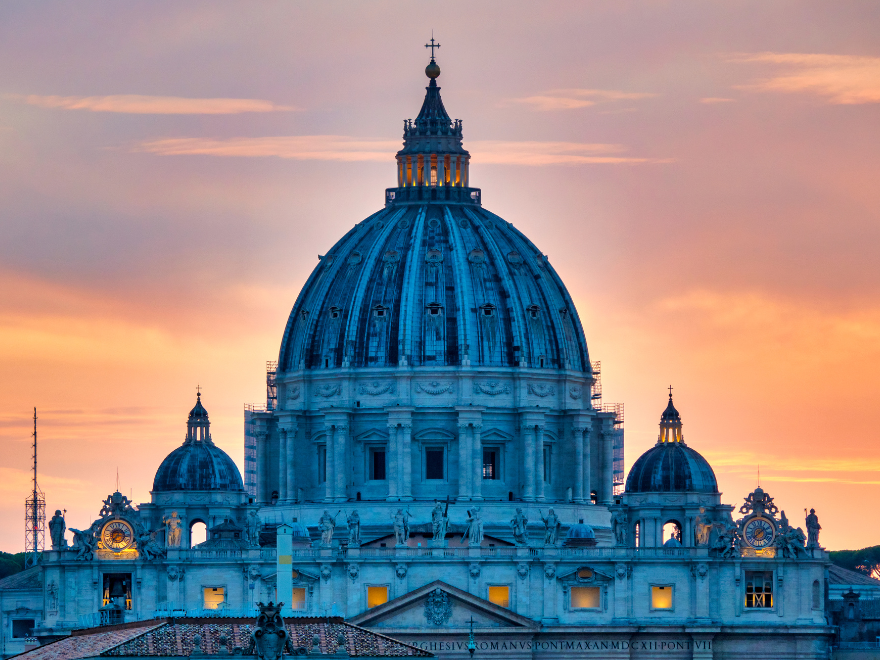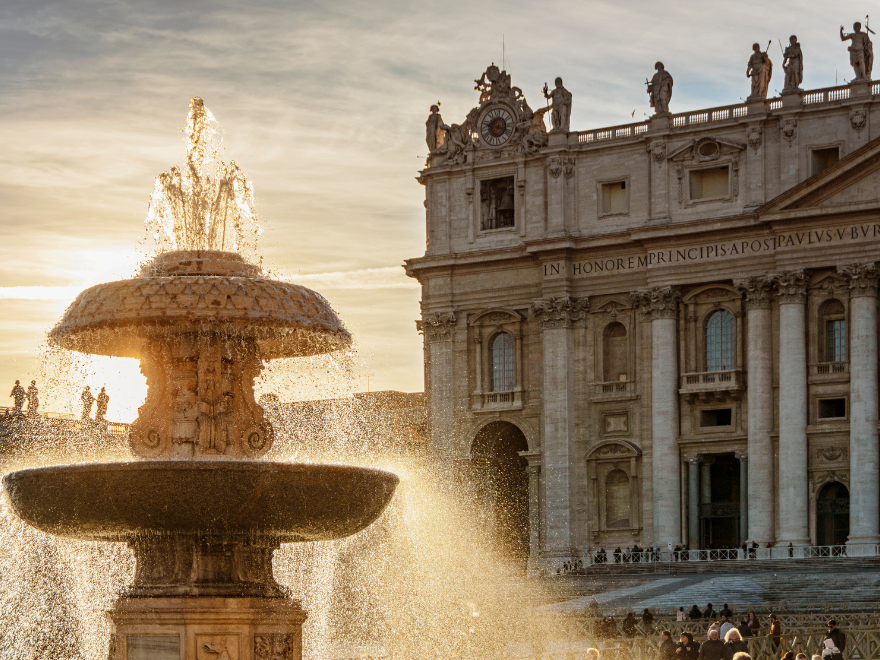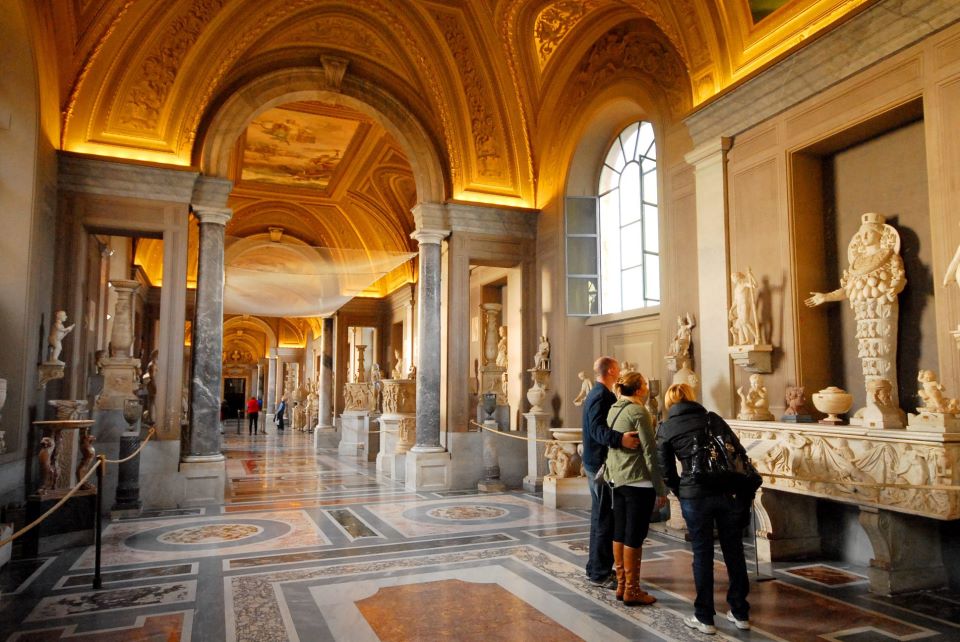The Jubilee Year 2025, proclaimed by Pope Francis, was set to be one of the most spiritually significant and widely attended events in recent Church history. Millions of pilgrims from around the world were expected to flock to Rome to walk through the Holy Doors, seek plenary indulgences, and participate in a year dedicated to reconciliation, hope, and renewal.
But on April 21, 2025, the world received unexpected news: Pope Francis passed away peacefully in the Vatican at the age of 88. His death, which occurred just a few months after the Jubilee had begun, has raised many questions for travelers and pilgrims alike.
What does this mean for the Jubilee? Will the Holy Year still continues as planned? And how should visitors to Rome prepare in light of these changes?
In this article, we’ll guide you through what the Pope’s passing means for the Jubilee and for anyone planning a trip to Rome during this extraordinary time. Whether you’ve already booked your flight or are considering a once-in-a-lifetime pilgrimage, here’s what you need to know.
Who was Pope Francis
Pope Francis, born Jorge Mario Bergoglio in Buenos Aires, Argentina, made history in 2013 as the first Jesuit pope, the first from the Americas, and the first non-European pontiff in over a millennium. His election marked an important turning point for the Catholic Church, ushering in a new era focused on humility, compassion, and inclusion.
Renowned for his simple lifestyle—choosing modest living quarters and driving a small car—Pope Francis quickly became a global symbol of renewal within the Church. He championed causes such as social justice, care for the poor, interfaith dialogue, and environmental responsibility. His message consistently centered on mercy, love, and the dignity of every human being.
The Jubilee Year 2025, themed “Pilgrims of Hope,” is deeply rooted in the legacy of Pope Francis. It reflects his vision of a Church that reaches out to the margins and opens its doors to all. Though he will not be present to see it unfold, his influence remains at the heart of what this Jubilee represents—for Rome, for pilgrims, and for the world.
The Jubilee continues: what changes?
Despite the passing of Pope Francis, the Jubilee Year 2025 will continue as planned. The Vatican has confirmed that the Holy Year’s full program—including major religious events, official pilgrimages, and the granting of indulgences—will go forward, honoring the late pontiff’s vision and leadership.
Pilgrims visiting Rome can still walk through the Holy Doors of Rome’s four major basilicas—St. Peter’s Basilica, St. John Lateran, St. Paul Outside the Walls, and Santa Maria Maggiore—a powerful ritual symbolizing spiritual renewal and the forgiveness of sins.
The ceremonies and spiritual offerings remain intact, ensuring that visitors will experience the Jubilee in all its richness and meaning. However, with the recent Pope’s Death, now taking on a new emotional depth, the tone of this Holy Year is likely to shift. What was once a celebration of hope may now also become a time of reflection and gratitude for Pope Francis’s enduring legacy.
For many, this moment offers a unique spiritual experience—a pilgrimage not only through the Eternal City, but through memory, prayer, and unity in a Church mourning yet moving forward.
Funeral of the Pope: global and spiritual impact
The funeral of Pope Francis will take place on April 26, 2025, in St. Peter’s Square, drawing hundreds of thousands of mourners, clergy, and dignitaries from across the globe. World leaders—both political and religious—are expected to attend, underscoring the Pope’s influence not just within the Catholic Church but throughout global society.
Papal funerals are deeply moving and steeped in centuries-old tradition. From the solemn Requiem Mass to the ancient rituals of burial beneath St. Peter’s Basilica, the emotional and spiritual weight of this moment is immense. For many, it marks the end of an era defined by humility, compassion, and radical openness.
Starting April 23, the body of Pope Francis will lie in state in St. Peter’s Square for three days, allowing the faithful to pay their final respects. On April 26 at 10:00 AM, the casket will be carried in a solemn procession into St. Peter’s Basilica, before being transferred to the burial site chosen by the Pope himself: the Basilica of Santa Maria Maggiore.
This church held deep personal significance for Pope Francis, who made a point of visiting it before and after each of his apostolic journeys.
The funeral will mark the first day of the Novendiali, a traditional nine-day period of mourning during which memorial Masses will be celebrated daily in St. Peter’s. The ceremony will also be broadcast on large screens installed along Via della Conciliazione, Piazza Pia, and Piazza Risorgimento, allowing thousands of mourners to visually participate in this historic moment.
What This Means for Visitors in Rome
If you’re planning to be in Rome during this historic time, here’s what to expect:
-
Large crowds and tight security, especially around Vatican City and key basilicas: With over 200,000 faithful expected, and more than 100 delegations including heads of state and government, the Vatican, St. Peter’s Square, and the surrounding areas will be under tight security. Security measures have been reinforced, and various law enforcement agencies will be deployed to ensure public order, the smooth running of the event, and the safety of pilgrims, tourists, and curious.
-
Road closures and redirected traffic in central Rome: There is a possibility of road closures for public order reasons, but the capital’s public transport service has been strengthened. Metro stations and bus lines have been reinforced to ensure smooth and easy access to the affected areas. For any further information, you can visit the official website of ATAC.
Beyond the heightened security measures and changes to public transportation, the death of a Pope during the Jubilee Year is such a rare event that it also presents unique and unmissable opportunities in the Eternal City, such as:
-
Special masses and commemorative events, offering unique spiritual opportunities
-
A rare chance to witness history unfold firsthand
The experience of being in Rome during the Pope’s Death and Jubilee—at a time of both mourning and renewal—can be profoundly meaningful. Whether attending memorial events or quietly visiting sacred sites, visitors become part of a once-in-a-generation chapter in the Church’s story.
Please note that, due to the Pope’s passing, many areas of the Vatican will not be accessible. The Basilica will be open only for paying respects to the Holy Father’s body. The last day to visit the Sistine Chapel and the Vatican Museums is April 25, while they will be closed on April 26 for mourning. The Sistine Chapel will then close again on Monday, April 28, to begin preparations for the Conclave. The Vatican Gardens are closed from April 23 until further notice. For the most accurate and updated information, please consult the official Vatican website.
The Conclave and the future
Following the death of Pope Francis, the Catholic Church now enters one of its most sacred and momentous traditions: the Conclave, set to begin May 6 and conclude by May 12, 2025. During this period, the College of Cardinals will gather in the Sistine Chapel to elect the next Pope—a process steeped in ritual, secrecy, and global significance.
This moment marks not just a leadership change, but a potential shift in the Church’s direction. The world watches as 120 cardinals vote in silence, guided by prayer, seeking a shepherd for over a billion Catholics. It is a time of great anticipation and hope—a key turning point.
Waiting for the famous white smoke — a moment that holds the entire Catholic world in suspense — during a Jubilee is undoubtedly a once-in-a-lifetime experience. whether you’re a devout believer or simply a curious traveler, Rome dresses in all its solemnity, ready to welcome anyone who wishes to discover its wonders.
What Tourists Can Expect in Rome
So if you’re visiting Rome during the Conclave, you’re stepping into a city in suspense, full of tradition, ceremony, and historical resonance. Here’s what to expect:
-
Increased crowds around the Vatican as the world awaits the white smoke
-
Live coverage in major Roman piazzas, allowing tourists to watch the announcement of “Habemus Papam”
-
A chance to be part of a living tradition, one rarely witnessed in person
-
A city balancing grief and hope, as it honors the past and welcomes the future
This period may involve occasional delays or route changes, but it also offers unparalleled access to Church history in the making. For many travelers, it’s not just a visit to Rome—it’s a pilgrimage through a transformative chapter in the life of the Catholic Church.
Rome during this time: what to expect as a visitor
Visiting Rome during the Jubilee and the death of Pope, will be a unique and unforgettable experience—but it’s important to arrive prepared, both logistically and spiritually.
With the combination of the Jubilee Year 2025, Pope Francis’s funeral, and the election of a new pope, the Eternal City will see an unprecedented influx of pilgrims and visitors. Expect heightened security, especially around the Vatican, and be prepared for long lines, rerouted traffic, and last-minute schedule changes.
But beyond the logistics lies something much deeper: an intense spiritual atmosphere. Rome will be filled with prayer, remembrance, and a collective sense of history in motion. Churches will remain open for extended hours, and the city itself will feel transformed by both mourning and spiritual renewal.
Tips for Respectful and Meaningful Tourism
-
Dress modestly, especially when visiting basilicas and sacred sites.
-
Be patient with crowding, delays, or unexpected changes in itinerary—this is a sacred and sensitive time for many.
-
Engage meaningfully with the experience: attend a mass, light a candle, join a procession, or simply pause for reflection in a quiet church courtyard.
Whether you’re Catholic or not, witnessing Rome during Jubilee is to step into a living story of faith, tradition, and transformation. It’s not just about seeing Rome—it’s about feeling its soul.
When popes have died during a Jubilee Year
While rare, the death of a pope during a Jubilee Year is not without precedent. In fact, Pope Francis is the second pope in the history of the Catholic Church to die during a Jubilee Year. The first instance occurred in 1700 with Pope Innocent XII. He had proclaimed the Jubilee with the bull Regi Saeculorum on May 18, 1699, but due to his deteriorating health, he was unable to personally preside over the opening of the Holy Door on Christmas Day. He passed away on September 27, 1700, and the Jubilee was concluded by his successor, Pope Clement XI.
There have been other instances where a Jubilee was proclaimed by one pope and carried out by another:
- In 1775, Pope Clement XIV proclaimed the Jubilee but passed away shortly after, so it was Pope Pius VI who oversaw it.
- In 1550, the Holy Year was declared by Pope Paul III but celebrated under Pope Julius III.
- In 1475, Pope Paul II issued the bull Ineffabilis Providentia, which established the tradition of celebrating Jubilees every 25 years and specified visits to the four major basilicas of Rome. However, after his death, Pope Sixtus IV led the celebrations.
- Finally, in 1390, Pope Urban VI called for the Jubilee, but it was carried out by Pope Boniface IX.
These historical moments remind us that the Jubilee is not tied to one person, but to a spiritual rhythm that transcends generations. Even amidst mourning, the doors of mercy remain open. The Jubilee becomes, in this sense, a powerful invitation to contemplate legacy, continuity, and the enduring hope at the heart of the Catholic faith.
Honoring the legacy, experiencing the Eternal City
To walk through Rome during the Jubilee, the Pope’s death, and the Conclave is to witness the meeting point of history, faith, and human experience. This is a time when the Eternal City becomes more than just a destination—it becomes a living pilgrimage, echoing with centuries of tradition and touched by the passing of one of the most beloved pontiffs in modern times.
Though the world mourns, Rome stands as it always has: a city of hope, unity, and sacred encounter. From the ancient stones of St. Peter’s Basilica to the quiet corners of hidden chapels, every path invites reflection—and renewal.
For those wishing to explore the sacred heart of Rome with insight and respect, specialized tours are available through Walks Inside Rome, offering deep access to the city’s spiritual and historical treasures. With expert local guides and thoughtfully curated itineraries, your journey through this extraordinary time will be both meaningful and memorable.

